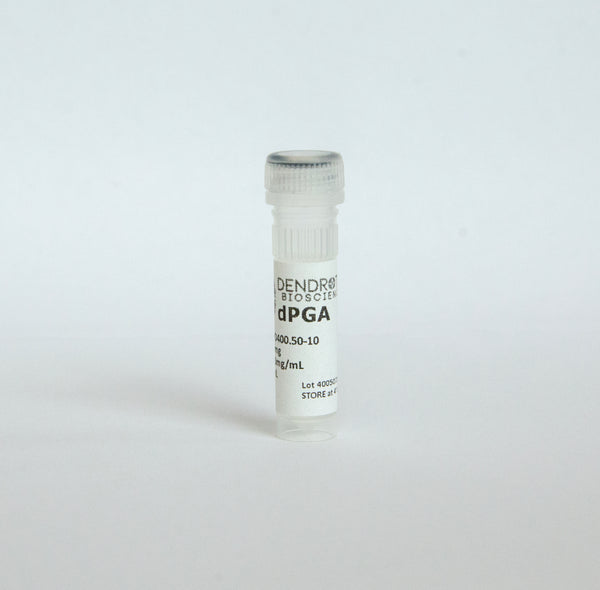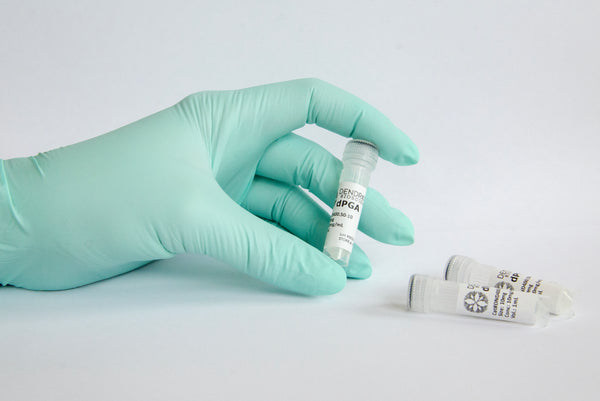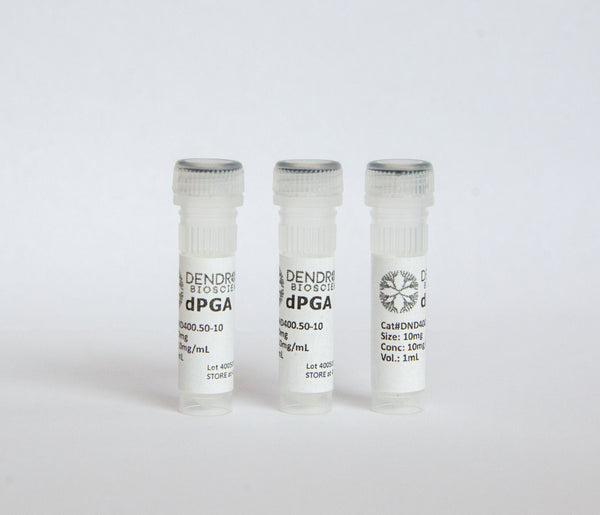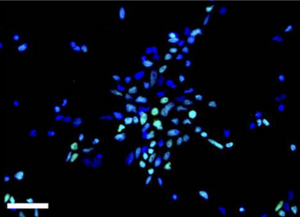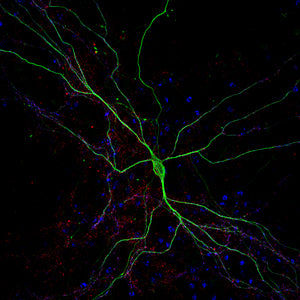
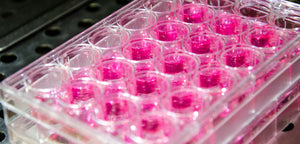
Protocols
Nov 18, 2024
Dendrimeric polyglycerol amine (dPGA) Protocol
Dendrimeric polyglycerol amine (dPGA)
Precautions and DisclaimerThis product is for R&D use only, not for drug,...
Read more
Mar 27, 2024
PLO/Laminin Coating Protocol
Laminin is an extracellular matric (ECM) protein and a key component of the basal lamina of epithelial tissues in the...
Read more
Scientific publications
Generation of human iPSC-derived phrenic-like motor neurons to model respiratory motor neuron degeneration in ALS
The fatal motor neuron (MN) disease Amyotrophic Lateral Sclerosis (ALS) is characterized by progressive MN degeneration. Phrenic MNs (phMNs) controlling the activity of the diaphragm are prone to degeneration in ALS, leading to death by respiratory failure. Understanding of the mechanisms of phMN degeneration in ALS is limited, mainly because human experimental models to study phMNs are lacking. Here we describe a method enabling the derivation of phrenic-like MNs from human iPSCs (hiPSC-phMNs) within 30 days. This protocol uses an optimized combination of small molecules followed by cell-sorting based on a cell-surface protein enriched in hiPSC-phMNs, and is highly reproducible using several hiPSC lines. We show further that hiPSC-phMNs harbouring ALS-associated amplification of the C9orf72 gene progressively lose their electrophysiological activity and undergo increased death compared to isogenic controls. These studies establish a previously unavailable protocol to generate human phMNs offering a disease-relevant system to study mechanisms of respiratory MN dysfunction.
Read more
Optimization of Long-Term Human iPSC-Derived Spinal Motor Neuron Culture Using a Dendritic Polyglycerol Amine-Based Substrate
Human induced pluripotent stem cells (hiPSCs) derived from healthy and diseased individuals can give rise to many cell types, facilitating the study of mechanisms of development, human disease modeling, and early drug target validation. In this context, experimental model systems based on hiPSC-derived motor neurons (MNs) have been used to study MN diseases such as spinal muscular atrophy and amyotrophic lateral sclerosis. Modeling MN disease using hiPSC-based approaches requires cul- ture conditions that can recapitulate in a dish the events underlying differentiation, maturation, aging, and death of MNs. Current hiPSC-derived MN-based applications are often hampered by limitations in our ability to monitor MN morphology, survival, and other functional properties over a prolonged timeframe, underscoring the need for improved long-term culture conditions. Here we describe a cytocompatible dendritic polyglycerol amine (dPGA) substrate-based method for prolonged culture of hiPSC-derived MNs. We provide evidence that MNs cultured on dPGA-coated dishes are more amenable to long- term study of cell viability, molecular identity, and spontaneous network electrophysiological activity. The present study has the potential to improve hiPSC-based studies of human MN biology and disease.
We describe the use of a new coating substrate providing improved conditions for long-term cultures of human iPSC- derived motor neurons, thus allowing evaluation of cell viability, molecular identity, spontaneous network electrophysiological activity, and single-cell RNA sequencing of mature motor neurons.
Read more
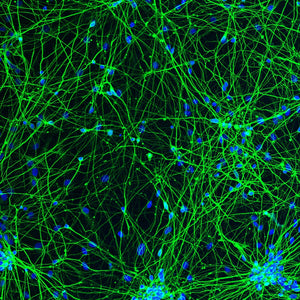
Aug 26, 2022
Dendritic Polyglycerol Amine: An Enhanced Substrate to Support Long-Term Neural Cell Culture
Long-term stable cell culture is a critical tool to better understand cell function. Most adherent cell culture models require a polymer substrate coating of poly-lysine or poly-ornithine for the cells to adhere and survive. However, polypeptide-based substrates are degraded by proteolysis and it remains a challenge to maintain healthy cell cultures for extended periods of time. Here, we report the development of an enhanced cell culture substrate based on a coating of dendritic polyglycerol amine (dPGA), a non-protein macromolecular biomimetic of poly-lysine, to promote the adhesion and survival of neurons in cell culture. We show that this new polymer coating provides enhanced survival, differentiation and long-term stability for cultures of primary neurons or neurons derived from human induced pluripotent stem cells (hiPSCs). Atomic force microscopy analysis provides evidence that greater nanoscale roughness contributes to the enhanced capacity of dPGA- coated surfaces to support cells in culture. We conclude that dPGA is a cytocompatible, functionally superior, easy to use, low cost and highly stable alternative to poly-cationic polymer cell culture substrate coatings such as poly-lysine and poly-ornithine.
Read more
Blog posts
The best coatings for multi-electrode arrays
Multi-electrode arrays (MEAs) are powerful tools for recording and stimulating cardiac and neural cells simultaneously, but their effectiveness hinges on maintaining stable, long-term cell adhesion on the electrodes. Traditional coatings like poly-lysine and poly-ornithine, while effective initially, degrade over time, leading to cell detachment and clustering, which impairs signal detection. Alternatives like polyethylenimine (PEI) offer better resistance to degradation but can compromise neuronal differentiation and responsiveness. A promising solution is dendritic polyglycerol amine (dPGA), a non-peptide polymer that supports long-term cell adhesion, differentiation, and minimal cell clustering, making it an ideal coating for MEAs in extended studies.
Read more
The science behind coating cell culture surfaces
The extracellular matrix (ECM) is crucial for cell growth in vivo, serving as a structural support. In vitro, replicating this supportive environment is essential, especially for primary or iPSC-derived cell lines that cannot adhere to standard tissue culture surfaces. Early methods involved using purified ECM components like collagen and fibronectin, but these were expensive and variable. Synthetic polypeptides, such as poly-lysine and poly-ornithine, emerged as cost-effective alternatives, providing a positively charged surface that enhances cell adhesion. Despite their effectiveness, these coatings are susceptible to degradation by cellular proteases, leading to culture instability over time.
To overcome this, a new coating based on dendritic polyglycerol amine (dPGA) was developed. This non-peptide polymer retains the high positive charge necessary for cell adhesion while being resistant to enzymatic degradation. Tests in neuronal cultures have shown that dPGA is as effective, if not more so, than traditional synthetic polypeptides, offering a more stable and durable solution for long-term cell culture.
Read more



